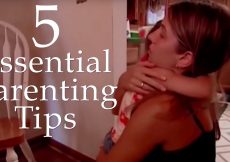Bumbo seats are a type and brand of baby seats that let babies sit by themselves with support. Parents often prefer these to prop their baby in a seated position. The seat features a snug, carved-out seat with a backrest, armrest, and a stopper at the front that holds the baby. The seats often come with seatbelts to secure the baby in place.
Many parents believe that the seat may make the baby learn to sit independently sooner. But when can a baby sit in a Bumbo seat? Read this post to know the usability and safety of Bumbo seats for babies.
When Can A Baby Sit In A Bumbo Seat?
Most babies can usually sit without support by the age of six months (1). However, babies can get into a sitting position by themselves between the ages of eight and twelve months (2). Therefore, you may use a Bumbo seat for your baby only after they learn to get into a sitting position themselves. It indicates that the baby’s muscles are strong enough to hold the head and back steady without support.
Are Bumbo Seats Safe For Babies?
Bumbo seats are considered safe and appropriate when used as intended, that is, placed on the floor and used under adult supervision (3). The seats allow parents to place the baby in a seated position, so they may interact or play with those around. Bumbo seats may be useful when camping or traveling with your baby since they are lightweight. You can place the baby in the seat for feeding or to keep them entertained.
Do Bumbo Seats Help Babies Sit Up?
There is limited research on whether seats, such as Bumbo seats, can help babies sit up. A study noted that babies younger than eight months could sit well without any problems when provided postural support, such as with a Bumbo seat (4). However, the study did not further explore if the seat could teach the baby to sit independently or expedite the achievement of the ability to sit independently.
Most babies can usually sit independently, even on toddler chairs, between the ages of eight and eighteen months (5). Therefore, it is best to wait for the baby to develop the innate motor skills to sit up by themselves. It is usually safer since the ability to sit independently indicates stronger muscles, which can be better at stabilizing the body and avoiding falls when seated.
What Are The Precautions For Using A Bumbo Seat?
You must keep the following points in mind when using a Bumbo seat for your baby.
- Never leave your baby unattended while in a Bumbo seat, even for a few moments.
- Do not put the seat on an elevated surface as it increases the risk of falling.
- Purchase Bumbo seats that feature a safety lap belt. If the Bumbo seat does not have a lap belt, the baby may crawl out of it and hurt themselves.
It should also be noted that if you use Bumbo seats or similar floor seats, baby chairs, car seats, or swings for an extended period, it might increase the risk of container baby syndrome (6). The syndrome occurs due to constant support provided by different equipment, such as seats, causing the baby to not use essential muscles to their full extent. It may ultimately cause the slow development of important muscles and delay the achievement of skills and milestones. Therefore, you may keep the use of a Bumbo seat limited to a few minutes each day.
What To Use Instead Of A Bumbo Seat?
The main aim of using a Bumbo seat is to help your baby sit up. Thus, instead of restraining them to a container seat and restricting their movements, you may try various other activities. These activities could help exercise the baby’s muscles and achieve developmental milestones, such as the ability to sit up (7) (8).
- Encourage tummy time since it is one of the best activities to strengthen your baby’s muscles and help with developmental milestones. Tummy time can be started as early as after birth.
- Try supported seating with your baby. Babies can hold their heads steady and unsupported by four months (1). Place the baby in a sitting position on a soft surface on the floor. Sit behind them and support their back. You may place the baby in a few minutes each day until the age of six months, when the baby can sit by themselves without support.
- Introduce activities that help develop gross motor skills, including reaching out to objects and pushing and pulling objects while seated. It may help strengthen back muscles, making it easier for the baby to stabilize their body while seated.
Bumbo seats may offer convenience when traveling or at home since they provide you a place to prop the baby in a seated position. Remember to use the seat only when you are around. Do not force the baby to use the seat if they resist sitting in it consistently or become cranky when you place them in it. Your little one will develop their ability to sit by themselves eventually.
References:
MomJunction’s articles are written after analyzing the research works of expert authors and institutions. Our references consist of resources established by authorities in their respective fields. You can learn more about the authenticity of the information we present in our editorial policy.
The following two tabs change content below.




































